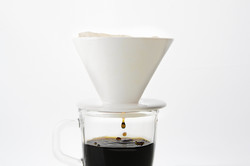Novel membrane technology for cleaner water
Membranes are used around the world to reclaim drinking water or to recover acids and metals from wastewater. However, conventional membranes are fouled very quickly, requiring regular maintenance and replacement. The LBLBRANE(opens in new window) (Regenerable active polyelectrolyte nanofiltration membranes for water reuse and metal/acid recovery) project aimed to develop a new membrane manufacturing process that uses nanotechnology to produce robust, self-cleaning membranes at low cost. The project made use of the layer-by-layer (LBL) technology, depositing thin layers of at least two different materials one on top of the other to create a functional active coating. The technology was used to develop a versatile and generic procedure for the rapid fabrication of low-cost, stable and chemically resistant polyelectrolyte membranes. Scientific researchers developed an improved LBL process that can produce thin active layers five times faster than conventional methods. They also identified the best materials to synthesize these membranes. Researchers also worked on quality control and risk minimisation to ensure that data obtained in a scientific environment (e.g. on silicon wafers) were also relevant for application to membrane surfaces. The LBL technique was used to prepare competitive, efficient and regenerable LBL-modified membranes for water treatment. Consortium members focused on the deposition of an active and regenerable separation layer made of polyelectrolyte multilayers and a reinforcing layer onto model, membrane-like and membrane surfaces. LBLBRANE enabled scientists and engineers to gain a better understanding of the physical processes occurring at the interfaces between different layers of the membrane. These processes include water flux, ion transport and diffusion through the various layers. Researchers also created a number of membrane modules for different industrial applications, which were successfully tested in situ. The membrane system developed by LBLBRANE has major benefits compared to conventional treatment systems. They include no use of solvents, ease of application, stability during harsh cleaning conditions, low cost, regeneration under mild and environmentally friendly conditions, high performance and an extended lifespan.







